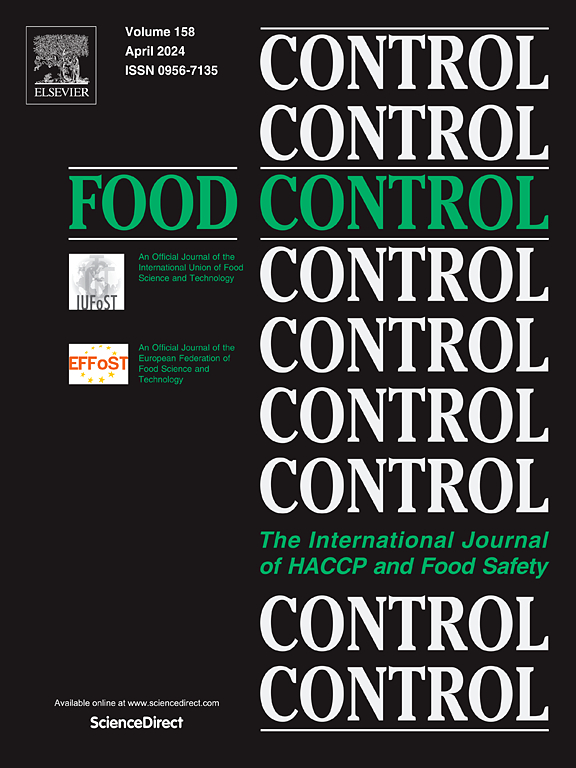Peracetic acid washes reduce Salmonella load on the surface of in-shell pecans and prevents cross-contamination between pecans during conditioning
IF 5.6
1区 农林科学
Q1 FOOD SCIENCE & TECHNOLOGY
引用次数: 0
Abstract
In-shell pecans are generally conditioned in water prior to shelling which presents the potential for foodborne pathogen cross-contamination. The use of sanitizers in conditioning water can be an effective way to reduce cross-contamination. The objectives of this study were to determine the effectiveness of varying concentrations of peracetic acid (PAA) in conditioning water at reducing Salmonella loads and preventing cross-contamination on in-shell pecans compared to sodium hypochlorite (NaOCl). In-shell pecans were inoculated with two concentrations (high and low) of a rifampicin resistant five-strain Salmonella cocktail. Inoculated pecans and uninoculated pecans were placed in water treatments (PAA: 0, 30, and 90 ppm; NaOCl: 1000 ppm free chlorine) and were sampled at 0, 2, 15, 60, and 240 min. There were significant (P < 0.05) Salmonella reductions at each timepoint on pecans conditioned in water containing 30 and 90 ppm PAA with the final reduction being 3.4 ± 0.9 and 4.2 ± 0.5 log CFU/g, respectively, after 60 min. The 90 ppm PAA treatment was significantly more effective at preventing Salmonella cross-contamination compared to the 0 and 30 ppm PAA treatments. Up to 4.0 log CFU/g transfer of Salmonella was observed from inoculated to uninoculated pecans in the 0 ppm treatment. Both 90 ppm PAA and 1000 ppm NaOCl treatments were found effective at reducing Salmonella levels on pecans (4.2 ± 1.2 and 4.0 ± 1.4 log CFU/g, respectively) and preventing cross-contamination over a 4-h conditioning period. The PAA was an effective sanitizer compared to NaOCl at preventing cross-contamination and also reducing Salmonella populations on in-shell pecans during washing and conditioning.
求助全文
约1分钟内获得全文
求助全文
来源期刊

Food Control
工程技术-食品科技
CiteScore
12.20
自引率
6.70%
发文量
758
审稿时长
33 days
期刊介绍:
Food Control is an international journal that provides essential information for those involved in food safety and process control.
Food Control covers the below areas that relate to food process control or to food safety of human foods:
• Microbial food safety and antimicrobial systems
• Mycotoxins
• Hazard analysis, HACCP and food safety objectives
• Risk assessment, including microbial and chemical hazards
• Quality assurance
• Good manufacturing practices
• Food process systems design and control
• Food Packaging technology and materials in contact with foods
• Rapid methods of analysis and detection, including sensor technology
• Codes of practice, legislation and international harmonization
• Consumer issues
• Education, training and research needs.
The scope of Food Control is comprehensive and includes original research papers, authoritative reviews, short communications, comment articles that report on new developments in food control, and position papers.
 求助内容:
求助内容: 应助结果提醒方式:
应助结果提醒方式:


